If you have pain in your lower back, it may be hard for you to sleep.
Sleeping in the wrong position can also make your back pain could get worse. The good thing is that there are ways to sleep that can help lower back pain go away while you are sleeping.
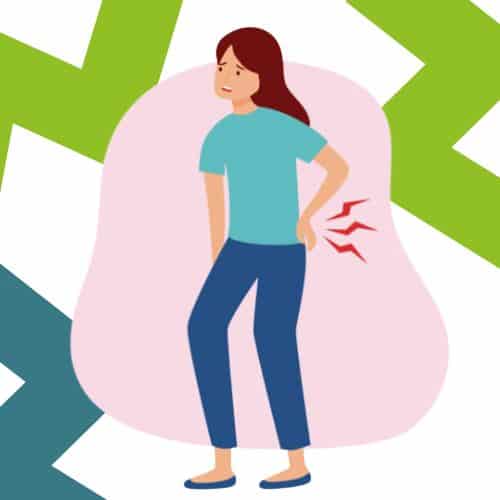
The two basic keys to getting a good night’s sleep are proper alignment and position. Some people find it a lot easier to sleep on their back, side, or stomach.
Continue reading to learn about sleeping positions you can try to sleep without pain and in comfort.
1. Sleeping On Your Back
Some people sleep on their backs. if you are one of them, you can try sleeping on your back. Just lie on your back and put a pillow beneath your knees to make yourself comfortable. Make sure that your spine stays straight. Put a “rolled-up towel” below your lower back for extra support and comfort.
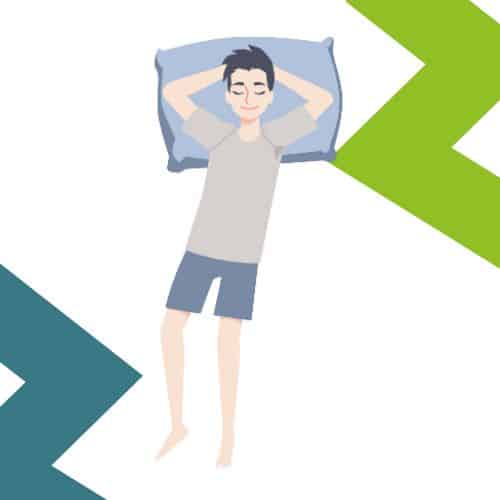
When you sleep on your back in this way, your spine will be better aligned and your weight will spread out more evenly. This means that it will decrease stress on your pressure points that once stressed can cause back pain.
2. Sleeping On Your Stomach

This position is best for stomach sleepers. But this is not a good way to sleep for most people because it puts stress on the neck. If you want to sleep in this position, put a pillow under your lower abdomen and pelvis to take pressure off your back. Additionally, you can fall asleep with or without a pillow on your head. If the pain is caused by a degenerative disc disorder, this position is very helpful.
3. Sleeping In A Fetal Position
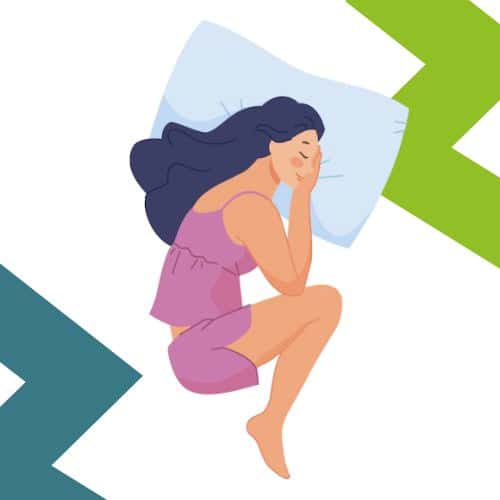
This is another useful tip for getting rid of lower back pain while you sleep. Just lie on your side, pull your knees in a little toward your chest, and twist up like a fetus stays in a mother’s womb.
You should switch sides periodically in order to keep your body from getting stiff and out of balance. Moreover, people with a herniated disc in their lower back should try to sleep in this position.
In this condition, the pain and weakness come from the natural cushion; the intervertebral disc being pushed out of its normal place. But when you twist into a position, the space between your backbones opens and relaxes. This gives you relief.
4. Sleeping On Your Side
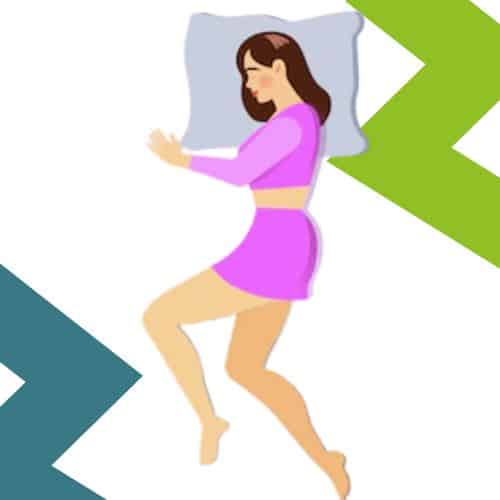
If you have trouble lying on your back, this position can help. Depending on which side you sleep on, the soft mattress should let your shoulder and the side of your body rest comfortably. Between your knees, put on a body pillow. Additionally, put a small pillow between your waist and the mattress to give yourself more support.
Even if you sleep best on one side, you shouldn’t always sleep on the same side every night. Try changing sides to avoid muscle imbalances and other problems. In this position, the relief does not come from the position itself but the pillow works well. This is because the pillow helps your pelvis, spine, and hips line up better, which reduces discomfort.
5. Sleep On Your Back While Reclining

Do you feel most at ease when reclining in a recliner? If you have isthmic spondylolisthesis, sleeping in a chair may be advantageous despite the fact that it may not be the ideal option for back pain.
Consider purchasing an adjustable bed so that you may sleep in this position with optimal alignment and support.
How is this position beneficial? “Isthmic spondylolisthesis” is a disorder characterized by vertebral slippage. In this condition reclining may be advantageous for the back because it produces an angle between the trunk thighs. This tilt helps alleviate pressure on the spine.
What Kind Of Mattress Do You Need To Sleep Better With Back Pain
You can find a variety of tips to extend the life of a sagging mattress by searching the Internet. These include sliding plywood under the mattress and eliminating the box spring. While these methods may work for some, the most effective solution is typically to replace an old mattress.
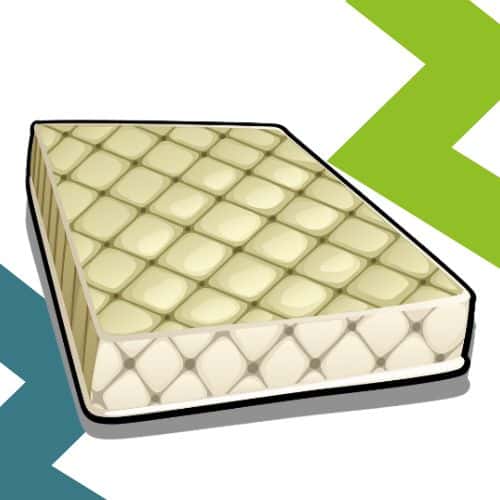
For certain individuals, a sagging mattress can aggravate lower back discomfort by placing additional stress and pressure on the spinal tissues. This can make it more difficult to fall asleep at night.
When it comes to sleeping with lower back discomfort, the priciest mattress is not always the greatest option. Instead, the ideal mattress for you is the one that offers the most restful night’s sleep. Keeping this in mind, here are a few mattress-buying tips to help you get started:
Your mattress should support your spine’s natural curve. This means that while you are resting on your back or side, your body type will determine the mattress you require. If your hips are broader than your waist, a soft mattress can be advantageous since it will allow your spine to remain in a neutral position while you sleep.
if your hips and waist are already aligned, a mattress that provides additional support may be more comfortable.
Researchers have found that persons with low back problems sleep worse on really firm mattresses than on other types. However, soft mattresses may also pose issues. You could sink too deeply, causing your joints to twist and increase your discomfort [1].
Try sleeping on a variety of beds, either at friends’ homes or at hotels, to determine which one is most comfortable. If you believe a firmer mattress could alleviate your pain, place a layer of plywood between your mattress and box spring, or try sleeping on the floor for a few nights to determine whether the additional support makes a difference. The spine should seem the same as when you are standing with proper posture.
Visit your neighborhood mattress store and check out a variety of mattresses. After 15 minutes, you will have a broad notion of whether or not a mattress is a suitable fit for you. Do not fear taking your time.
If you share your bed, you might consider purchasing a larger mattress. This will provide you both sufficient space to sleep without disturbing one another during the night.
What Kind Of Pillow Do You Need To Sleep Better With Back Pain
Your pillow should support the upper part of your spine by cradling your head and neck.
If you sleep on your back, the gap between your mattress and neck should be totally filled by your pillow.
If you sleep on your side try using a thicker pillow to keep your head in line with the rest of your body.
Don’t put your pillow under your shoulders no matter what.
For people who sleep on their backs, it may be best to use thinner pillows with additional padding at the lowest to support the neck.
Additionally, memory foam is a good material that fits your neck perfectly. You can use a water pillow, and firm, all-over support to sleep more comfortably.
If you sleep on your stomach, you should try to use the thinnest pillow you can or none at all. In fact, you could try sleeping on your side with a body pillow in your hand. The body pillow will make you feel like something is on your stomach and help you get the rest of your body in the right place.
If you sleep on your side, you might want to find a firm pillow. Find one with an extra-wide gusset to fit the area between your shoulder and ear. Remember to position a hard pillow between your knees. You may even substitute a rolled-up towel.
Alternatively, replace your pillow every 18 months or so. Pillow covers can be an effective barrier, but pillows still contain allergens such as dust mites and mildew, which can exacerbate allergies.
Frequently Asked Questions (FAQs)
Why Does My Lower Back Hurt When I Sleep?
Just like with everyday back pain, it’s not always clear what causes back pain at night. Back discomfort can be caused by any of the following, among other things: Problems with the way the spine moves or with other parts of the body. Additionally, disk degeneration can also cause back pain at night.
What Is The Best Sleeping Position For Back Pain?
The optimal sleeping position is on your back. The most effective position for preventing back discomfort is resting flat on your back. Despite this, many individuals find it to be the most difficult approach to achieving deep sleep. Place one pillow under your head or neck and another under your knees for maximum spine alignment.
Why Is Nighttime Back Pain A Red Flag?
In the field of back care, nighttime back pain has come to be viewed as an ominous symptom, a possible indicator of primary or metastatic cancer. Some recommendations, diagnostic algorithms, and academic studies include the existence of nocturnal discomfort as a “red flag” for cancer.
Related Articles:
- How to Burn Fat While Sleeping
- How to Lose Weight While Sleeping
- How to Stop Snoring While Sleeping
- How to Relieve Hip Pain While Sleeping
- How to Prevent Dry Mouth While Sleeping
- What Causes Leg Cramps While Sleeping
- How to Decompress Spine While Sleeping
- How to Clear a Stuffy Nose While Sleeping
- How to Increase Oxygen Levels While Sleeping
- How Many Calories Do You Burn While Sleeping
- What Should Your Heart Rate be While Sleeping
- What Causes Headaches at Night While Sleeping
- What Causes Extremely Dry Mouth While Sleeping
- How to Improve Circulation in Legs While Sleeping
- How to Relieve Back Pain During Pregnancy While Sleeping
